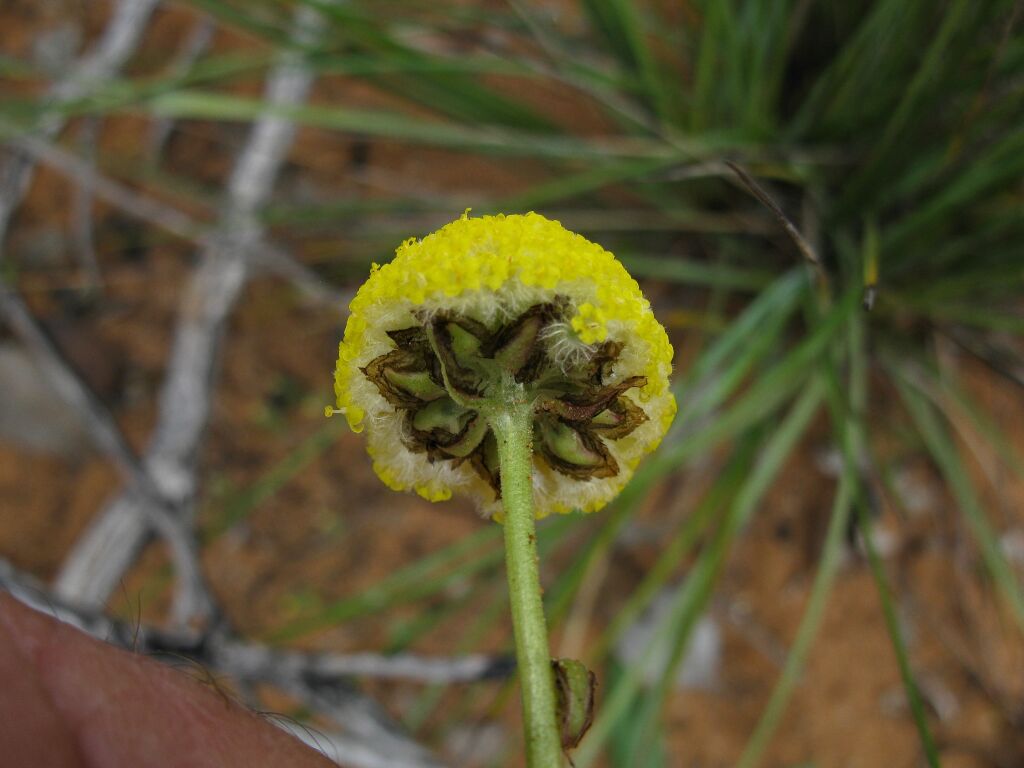Craspedia variabilis
J.Everett & DoustErect herb with 1–several flowering scapes to 50 cm high; roots thick, tomentose. Leaves in a basal rosette and cauline, narrow-spathulate, 5–13 cm long, 5–13(–20) mm wide, broad-acute, pale to olive-green, with glandular hairs and multiseptate hairs and often with very sparse fine woolly hairs (particularly near margins). Inflorescence golden-yellow, c. spherical, 10–25 mm wide, with 40–100 capitula; scape straw-coloured to reddish, with multiseptate hairs and few fine, woolly hairs. Capitula prominently pedunculate, with 7–12 florets; bract subtending capitulum ovate-cordate to broadly deltoid, decurrent on the peduncle, membranous margins variously developed, colourless to brown, stereome ovate from about as wide as membranous margins to comprising nearly all of the bract, glandular, finely and sparsely woolly at base. Cypselas 1.5–2.5 mm long, 0.6–1.2 mm wide; pappus 3–6 mm long Flowers spring and summer.
LoM, MuM, Wim, GleP, Brid, VVP, VRiv, MSB, MuF, GipP, OtP, WaP, Gold, CVU, GGr, DunT, NIS, EGL, EGU, WPro, HSF, HNF, MonT, HFE, VAlp. Also WA, SA, Qld, NSW, ACT. Except for the far north-west, widespread in lowlands to montane areas, rarely ascending to subalps, usually on sandy to clay-loam (sometimes very shallow) soils.
Specimens from near Mitiamo have narrower leaves than typical, and in this respect resemble Craspedia basaltica, but lack the very long, reddish petioles typical of that species.
Everett, J. (1999). Craspedia. In: Walsh, N.G.; Entwisle, T.J., Flora of Victoria Vol. 4, Cornaceae to Asteraceae, pp. 758–764. Inkata Press, Melbourne.
 Spinning
Spinning



